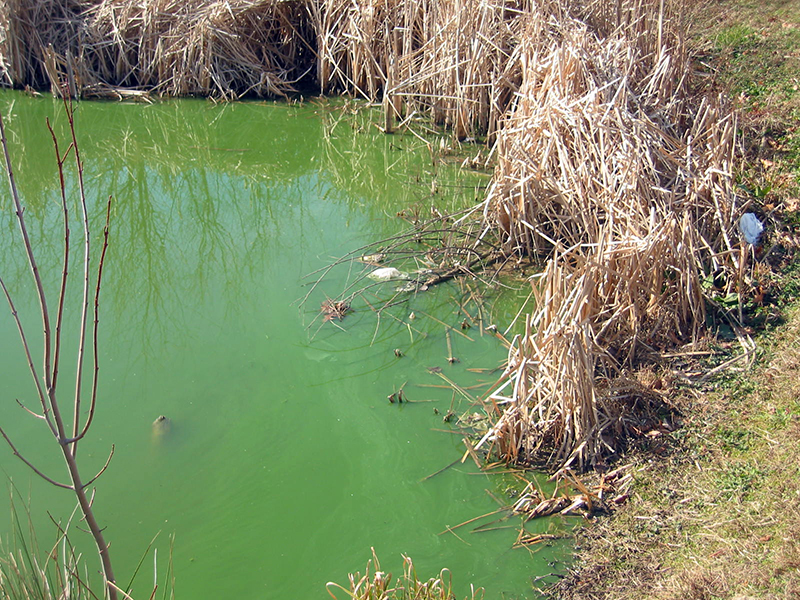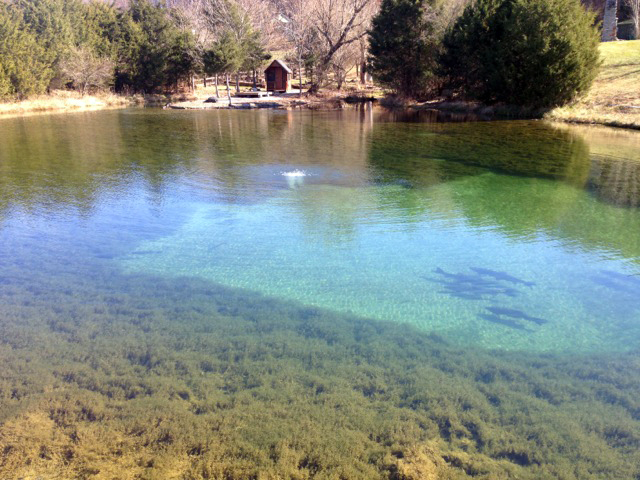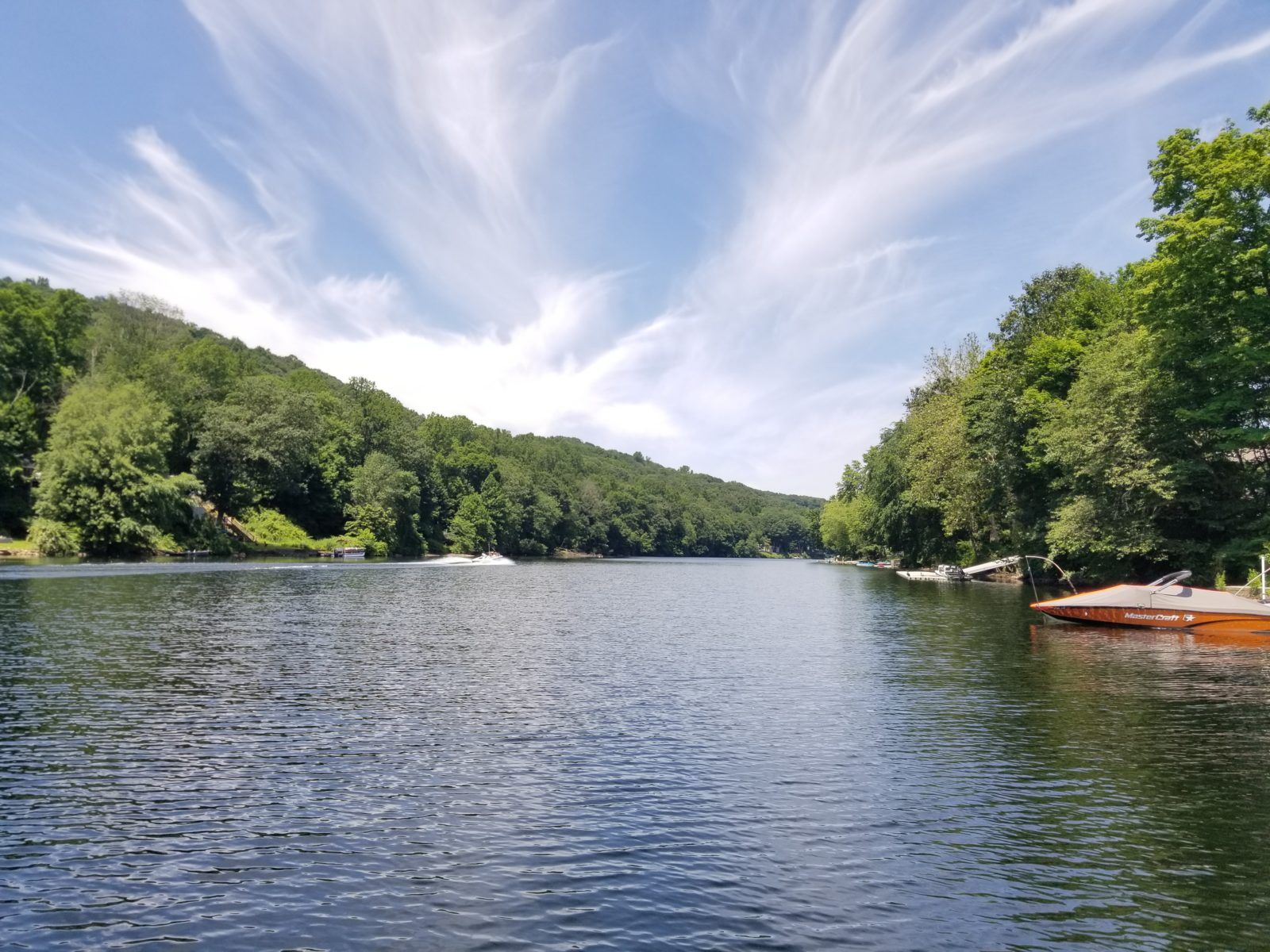Managing Your Fishery’s Algae and Aquatic Vegetation
April 10th, 2015
Written by Industry Expert Marcus Harris, Fisheries and Wildlife Biologist
 As lake and pond managers, we are often tasked with eliminating any signs of nuisance aquatic weed and algae growth in the water. But is this always the best thing when managing a waterbody for fisheries as well? In my experience, the answer is a mix between yes and no. There is a balance between leaving beneficial plant species while controlling the unwanted ones.
As lake and pond managers, we are often tasked with eliminating any signs of nuisance aquatic weed and algae growth in the water. But is this always the best thing when managing a waterbody for fisheries as well? In my experience, the answer is a mix between yes and no. There is a balance between leaving beneficial plant species while controlling the unwanted ones.
Algae are simple plants with no true roots that range in size from single microscopic cells to the giant kelps found in the ocean. Most of the time, in ponds, we see algae as floating mats on the surface of the waterbody. These mats can be any number of species we commonly refer to as filamentous algae. It provides little value to the ecosystem and is an indicator of high nutrient levels in the water. In this case, steps should be taken to control and eliminate the growth through treatment, aeration, and nutrient reduction.
 Another problematic algae group is called blue-green planktonics. Also known as cyanobacteria, these algae are extremely adaptable and are commonly seen in lakes and ponds as a bright green tint in the water. They can move up and down in the water column based on sunlight and can appear as a mint green, paint-like film on top of the water. Like the filamentous species, these cyanobacteria provide very little value to the water and can actually produce and release toxins that have the potential to kill fish and other organisms and in rare cases can cause illness to pets and people swimming in the pond. It is important to quickly control any blue-green algae blooms that occur.
Another problematic algae group is called blue-green planktonics. Also known as cyanobacteria, these algae are extremely adaptable and are commonly seen in lakes and ponds as a bright green tint in the water. They can move up and down in the water column based on sunlight and can appear as a mint green, paint-like film on top of the water. Like the filamentous species, these cyanobacteria provide very little value to the water and can actually produce and release toxins that have the potential to kill fish and other organisms and in rare cases can cause illness to pets and people swimming in the pond. It is important to quickly control any blue-green algae blooms that occur.
 Ok, that’s enough about bad algae. There are a few types of algae that can be beneficial to a fishery. Green planktonic as well as macro-algae tend to provide more benefits than problems. Green planktonic algae are microscopic but can noticeably tint the color of the pond. They are commonly referred to as phytoplankton and play an important part in the food chain. They turn sunlight energy into chemical energy through photosynthesis. These phytoplankton are eaten by zooplankton, microscopic animals which are eaten by larval fish, which are then eaten by larger and larger fish. Without a healthy phytoplankton population, there can be no healthy large fish population. Through aeration and other biological techniques such as fertilization, phytoplankton can support, flourish, and enhance a fishery.
Ok, that’s enough about bad algae. There are a few types of algae that can be beneficial to a fishery. Green planktonic as well as macro-algae tend to provide more benefits than problems. Green planktonic algae are microscopic but can noticeably tint the color of the pond. They are commonly referred to as phytoplankton and play an important part in the food chain. They turn sunlight energy into chemical energy through photosynthesis. These phytoplankton are eaten by zooplankton, microscopic animals which are eaten by larval fish, which are then eaten by larger and larger fish. Without a healthy phytoplankton population, there can be no healthy large fish population. Through aeration and other biological techniques such as fertilization, phytoplankton can support, flourish, and enhance a fishery.
 Macro-algae, such as Chara spp., also provide benefits to a waterbody. These algae grow in the substrates and appear to be rooted plants but they have no true vascular systems or roots. They directly provide a food source to some species of fish but also provide habitat for zooplankton and other small food organisms to live and reproduce. Some macro-algae species also clarify lakes and ponds by removing calcium and other minerals from the water. They can grow quickly, reach the surface, and become unsightly, but can easily be “mowed” back through various methods. In most cases macro-algae can be left alone as an added benefit to a fishery.
Macro-algae, such as Chara spp., also provide benefits to a waterbody. These algae grow in the substrates and appear to be rooted plants but they have no true vascular systems or roots. They directly provide a food source to some species of fish but also provide habitat for zooplankton and other small food organisms to live and reproduce. Some macro-algae species also clarify lakes and ponds by removing calcium and other minerals from the water. They can grow quickly, reach the surface, and become unsightly, but can easily be “mowed” back through various methods. In most cases macro-algae can be left alone as an added benefit to a fishery.
 Much like algae, true vascular plants can both be good and bad for a lake or pond, depending on the species. Emergent plant types (pickerel weed, duck potato, spatterdock, irises, rushes, sedges, etc.) grow within the first couple feet of the shoreline and stick out above the water. They provide needed nursery habitat for larval fish as well as hiding places for smaller prey fish and habitat for other organisms low on the food chain. They are also easily controlled from a management standpoint and are often recommended plantings to add habitat.
Much like algae, true vascular plants can both be good and bad for a lake or pond, depending on the species. Emergent plant types (pickerel weed, duck potato, spatterdock, irises, rushes, sedges, etc.) grow within the first couple feet of the shoreline and stick out above the water. They provide needed nursery habitat for larval fish as well as hiding places for smaller prey fish and habitat for other organisms low on the food chain. They are also easily controlled from a management standpoint and are often recommended plantings to add habitat.
When managing a fishery, shooting for a goal of about 15 percent vegetation coverage is ideal. This gives enough cover for habitat, refuge, and food, without becoming overabundant and dampening the fishing experience. Plant species that grow quick, thick, and spread easily are considered undesirable and problematic. Aquatic weeds can become costly to control and unsightly when they reach the water’s surface. They also can impede boat traffic and limit fishing and recreation opportunities. Control can be obtained and maintained through a number of different strategies. If the vegetation has already been established and is thick, a herbicide treatment may be the best method to gain control again. The best time to start treatment is the early spring, before major growth starts. Herbaceous fish, such as triploid grass carp, can be stocked in some states to eat the vegetation. And when coupled with aeration to reduce nutrients, they become a winning biological combination.
Another option is the addition of aquatic dye to the waterbody. These dyes are added to reduce the amount of sunlight reaching through the water column and are effective at reducing plant growth in most waterbodies greater than 4 feet deep. They also add a reflective quality to the pond’s surface and enhance the overall aesthetics of a pond.
Overall, when considering algae and plant growth in a fishery, the most important thing to remember is to stay ahead of the curve. It is much easier and more cost effective to control growth before it becomes problematic. It is also important to have a healthy, established ecosystem before stocking any fish or building a fishery. Be sure to consult a fisheries management professional in order to ensure your fishery is reaching its maximum potential!
Contact the experts at 888-480-5253 for all of your lake, pond and fisheries management needs.
Marcus Harris is a Fisheries and Wildlife Biologist with SOLitude Lake Management. Since 1998, SOLitude Lake Management has been committed to providing full service lake and pond management services that improve water quality, preserve natural resources, and reduce our environmental footprint. Services are available throughout the Eastern United States. Fisheries management consulting and aquatic products are available nationwide. Learn more about SOLitude Lake Management and purchase products at www.solitudelakemanagement.com.










